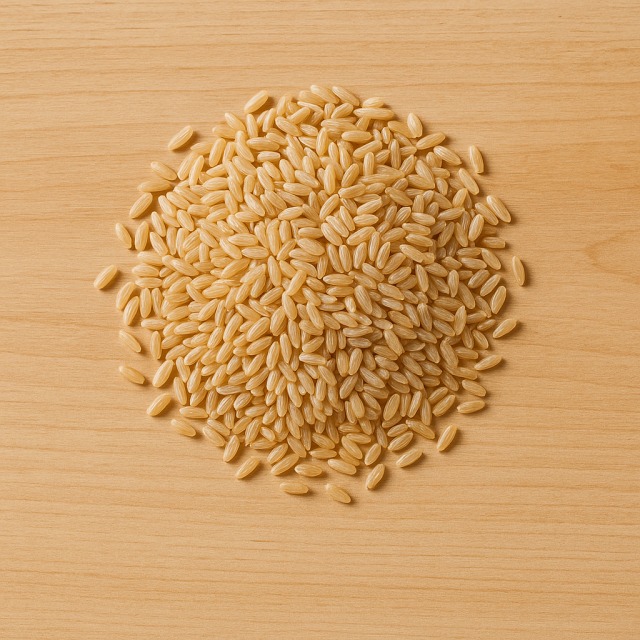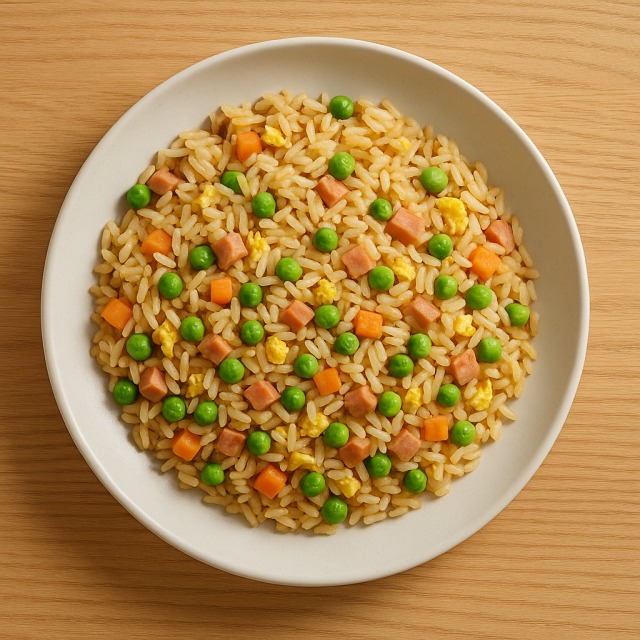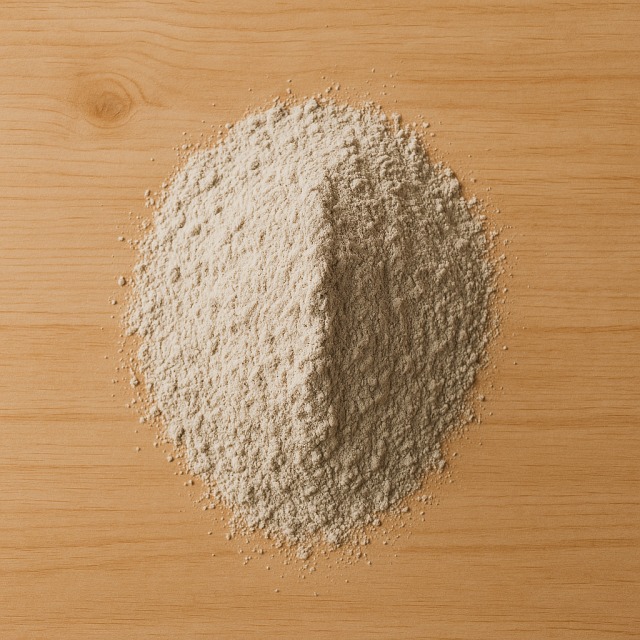Calorie Chart / Trimmings / Brown rice
How Many Calories Are in Brown rice?
Calculation of the nutritional value & Recommended Dietary Intake of brown rice
For g and a calorie requirement of kcal
| Calories 250 kcal | Proteins 5 g | Lipids 1.6 g | Carbohydrates 54 g |
| 13% | 7% | 2% | 20% |
Health benefits of brown rice

Brown rice - 100g
Calories 125 kcal
Proteins 2.5 g
Lipids 0.8 g
Carbohydrates 27 g
Supplying roughly 125 calories per 100 g, brown rice is generally classified as a moderate-calorie source of complex carbohydrates. Those calories come mainly from slow-release starches, making the grain interesting for people who need steady energy without dramatic blood-sugar peaks. Because its calories are paired with fiber (around 3 g/100 g), brown rice tends to increase satiety more than refined white rice, which can help limit overall calorie intake during the day.
Beyond its calorie profile, brown rice provides notable amounts of manganese (essential for antioxidant enzymes), magnesium (important for muscle relaxation and blood-pressure regulation), phosphorus, and selenium. The bran layer also carries B-group vitamins such as thiamine (B1) and niacin (B3), which support energy metabolism—the very pathway that turns food calories into usable ATP. Some studies even highlight a supposed cardiovascular benefit linked to the presence of gamma-oryzanol and plant sterols, although the evidence is still emerging and should be considered "supposed" rather than definitive.
Historically, brown rice was the staple grain in many Asian populations before industrial polishing became widespread. Its modest calorie density combined with a low glycemic index (GI ≈ 50) contributed to traditional dietary patterns that kept type-2 diabetes rates low for centuries. Choosing brown rice today, therefore, remains a simple historical trick for eating quality carbohydrates without overloading on empty calories.
Tips for incorporating brown rice into a balanced diet
To design a balanced plate, pair one cooked portion of brown rice (about 150 g, or 190 calories) with a lean protein such as salmon or chicken breast and a heap of steamed broccoli. This trio supplies proteins, omega-3 fatty acids, fiber, and micronutrients while keeping total meal calories under tight control.
For a vegetarian bowl rich in proteins yet moderate in calories, mix brown rice with sautéed tofu, edamame, and a spoon of soy sauce. Compared with white rice, the extra fiber again helps you feel full, which often leads to eating fewer calories over 24 hours.
If you crave variety, try a "Tex-Mex" brown-rice salad: combine the grain with diced bell pepper, black beans, corn kernels, and a zest of lime. The vegetables add bulk with insignificant calories, so the overall dish stays light yet satisfying.
Athletes looking to refuel after training can swap pasta for brown rice in recipes like beef curry with rice. The steady influx of calories and carbohydrates supports glycogen restoration without the insulin spike that sometimes follows more refined grains. Remember, though, that sauces rich in cream or butter can double the calories—choose tomato-based or spice-based sauces to stay on track.
Frequently Asked Questions
- How many calories are in brown rice?
- Brown rice provides 125 kcal per 100 g.
- Is brown rice lower in calories than white rice?
- Cooked brown rice and cooked white rice contain fairly similar calories (around 120-130 kcal/100 g). The advantage of brown rice is that its calories come with more fiber and micronutrients, helping you feel satisfied with the same calorie count.
- Does rinsing or soaking brown rice change its calorie content?
- No. Rinsing removes surface starch but does not significantly alter the grain's calories. Any calorie difference is negligible.
- How much brown rice should I eat if I want to lose weight?
- Portions of 100–150 g cooked (125–190 calories) are usually adequate within a 500-kcal deficit diet. Combine the grain with plenty of non-starchy vegetables to keep total calories low.
- Is brown rice a good post-workout food for athletes?
- Yes. About 200 g cooked brown rice delivers 250 calories and 54 g of carbohydrates, enough to replenish glycogen alongside a protein source like egg or tuna.
- Can I replace brown rice with another grain to vary calories and nutrients?
- Certainly. Pseudocereals such as quinoa or whole-grain wheat berries have comparable calories but offer slightly different amino acid and mineral profiles.
Similar foods
Information provided by Calorie Menu may contain inaccuracies or errors. It cannot, under any circumstances, substitute medical advice or medication.










